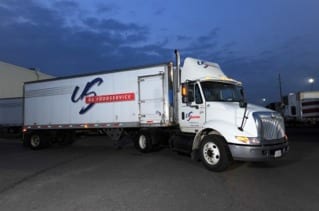Lost productivity is a killer at the bottom line for any business. For the largest companies, small inefficiencies can lead to large scale losses. For U.S. Foodservice, one of the largest food distributors in the country, poor connections in the field led to downtime across the board … until they looked to a new connectivity solution. Republished with permission from Field Technologies Online.
 Time is money. Overused cliché? Definitely. But true, nonetheless. And, nothing illustrates the concept better than a mobile sales force, for which downtime is a double-edged sword — you’re paying an employee for unproductive hours, and losing out on revenue that comes from field sales reps’ customer-facing activities. If your field sales force utilizes mobile technologies to perform their daily duties, providing them with a reliable solution is one of the most important steps you can take to prevent wasted time and, therefore, money. U.S. Foodservice recognized the need to improve the mobile tools the company’s field sales reps use, and in doing so, has recovered 1.1 million hours of productivity per year.
Time is money. Overused cliché? Definitely. But true, nonetheless. And, nothing illustrates the concept better than a mobile sales force, for which downtime is a double-edged sword — you’re paying an employee for unproductive hours, and losing out on revenue that comes from field sales reps’ customer-facing activities. If your field sales force utilizes mobile technologies to perform their daily duties, providing them with a reliable solution is one of the most important steps you can take to prevent wasted time and, therefore, money. U.S. Foodservice recognized the need to improve the mobile tools the company’s field sales reps use, and in doing so, has recovered 1.1 million hours of productivity per year.
U.S. Foodservice is one of America’s largest food distributors, and disperses food and related products to more than 250,000 customers including restaurants, hotels, hospitals, schools, and government institutions. A field sales force of 5,000 territory managers oversees these 250,000 customers based on a geographical assignment within one of more than 60 divisions, and is also responsible to prospect new business in their territory. The territory managers visit current customers in person on a regular basis to discuss new products, consult on ingredients and menu options, and review current promotions. Customer visits often result in orders, which territory managers have to submit by five o’clock for next-day delivery.
U.S. Foodservice’s territory managers have been using laptops in the field since 1991. They currently use a combination of Dell and HP laptops for email and to place orders for customers. A mixture of WiFi capability, air cards, and aLAN are used for connectivity. Territory managers also carry any relevant marketing materials with them as they travel from site to site — from current promotions to catalogs and training materials. While U.S. Foodservice’s solution might sound like a perfectly good one, the company was having some issues until recently that prevented the solution from working the way it was meant to.
Unreliable Connectivity = Unproductive Field Workers
Most importantly, territory managers were experiencing challenges with connectivity that made constant, real-time communication impossible. In a perfect world, the territory managers would be able to use the laptops to input and submit customer orders in real-time while on site. However, to do so, the territory manager had to depend on unpredictable wireless coverage or a dial-up connection at the customer site. With either option, a manual process of initiating the connection and then logging in to the company’s VPN was required. Further, with 63 divisions, there were a number of connectivity options and VPN iterations being used — nothing was standardized.
“Because we did not have a constant communication mechanism for our territory managers, they did batch-type processing,” says Daniel Corcoran, manager of client services at U.S. Foodservice. “Rather than input orders as they were taken, territory managers would batch them all and quit work at 4 o’clock to get home, and then send them in before the 5 o’clock cutoff.” With 5,000 sales reps, each worker taking off work an hour early to batch orders was a substantial amount of lost productive time — time that should be spent bringing in more sales. Indeed, with this system, U.S. Foodservice was losing approximately 1.1 million hours of productive time per year.
To read the rest of this article, go to Field Technologies Online.


Share this: